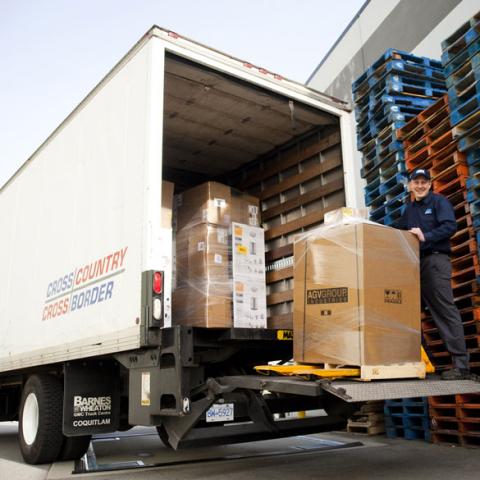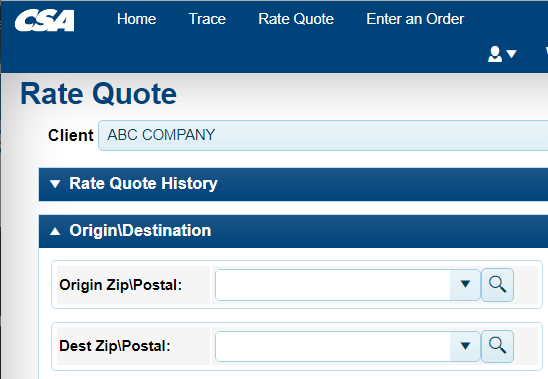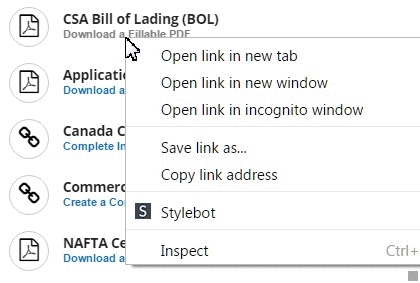What is a Transportation Management System?
What is a TMS?
A Transportation Management System is software designed to support and improve the process of shipping. A typical TMS system simplifies transportation management by helping you compare routes and carriers so that you can find the right service provider for your needs. It offers price comparisons so you can find the best rate.
Many TMS shipping platforms also provide the user with the ability to book and track their freight’s journey from start to finish. With this level of supply chain transparency, a TMS can streamline transportation logistics, and provide you with insights about available options.
Are there different types of TMS?
TMS logistic managing software can be purchased to scale depending on the size of a business, and its needs. A basic Transportation Management System will focus on rates and booking. More sophisticated options will offer capabilities like managing payments, and analytics reporting providing fiscal insights intended to further optimize the cost of transportation.
TMS (Transportation Management System) is often included as an option within—or able to integrate with—an ERP (Enterprise Resource Planning) or WMS (Warehouse Management System) software, which advances the functionality of the entire supply chain. Businesses can choose cloud-based, or on-premise-based platforms according to preference.
Who uses them?
Anyone regularly moving large quantities of packages or freight likely employs a TMS system. Third Party Logistics (3PL) companies often use a TMS, and consequently offer the benefit of its capabilities and insights to business partners.
Distribution companies and e-commerce businesses are also common users of Transportation Management Systems, since both industries benefit from the supply chain visibility offered by the software.
Logistics Management reported increasing numbers of TMS users in 2013, and Gartner’s March 2019 Magic Quadrant report said that TMS implementations would make up “31% of the 6.2 billion supply chain execution market” by 2022.
How do they work?
TMS is a tool to enhance transportation logistics. It contains thorough information about available carriers. This technology can be leveraged to compare rates, help you select the best routes, and find the best carrier for a specific shipment.
A TMS is often integrated with other supply chain management systems like ERP or WMS. By automating and synchronizing data across modules, it further simplifies logistics management. For example, an ERP would handle administrative tasks, like order management. A TMS would receive an order, and give you the options available to book and ship that order in a timely and cost-effective way.
What are the functions of a TMS?
The exact functions will depend on the TMS module you select, but overall the software works to streamline the transportation process. A TMS helps you plan a shipment with instant comparisons and booking. Many offer tracking, and updates on any shipping delays.
On an administrative level, some TMS modules can help you manage contracts, orders, and communications with other businesses. It will also deal with settlement, the record of freight metrics like pick up time and transit time. These metrics in turn inform the analytic reports a TMS produces to further help you identify the best practices for your business.
What are the benefits?
The intended purpose behind implementing a TMS freight managing software is to improve shipping logistics, and consequently reduce freight spend.
With the ability to instantly compare options, you won’t waste valuable time hunting down carrier quotes. TMS shows you the available options, routes, and rates, so you can make an informed booking decision to optimize profits.
Analytic reports offer another level of supply chain transparency to help you identify best practices for the future. With a more efficient shipping process and tracking ability, customer satisfaction will increase.
CSA Transportation and TMS
Founded in 1986, CSA Transportation is one of the leading LTL freight transportation operations at work in Canada and the USA. With so many years of supply chain management experience, you can trust CSA to help you optimize your shipping process throughout the United States and Canada.
We offer both quick tracking by load number, and the more advanced client portal tracking system. With the client portal, you can view the current status of a shipment, receive email updates about your shipment, and even download relevant documentation. Let CSA help you update your supply chain: contact us today for your free online quote.









